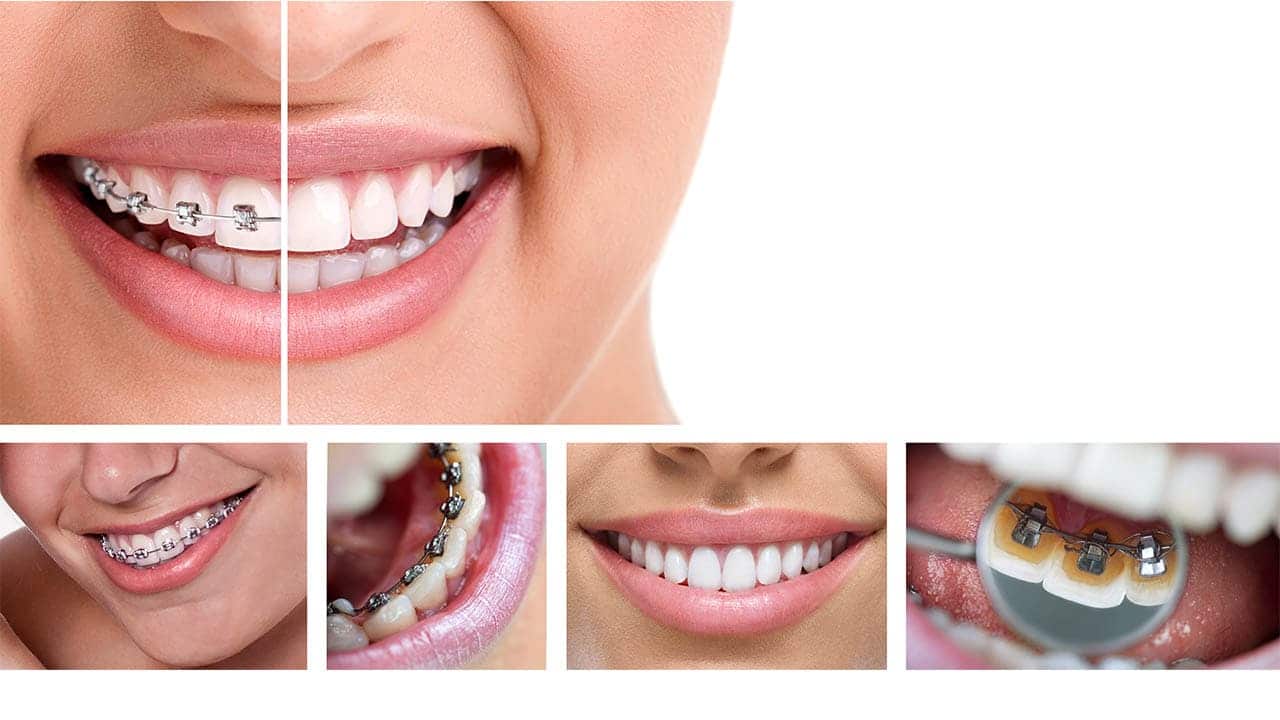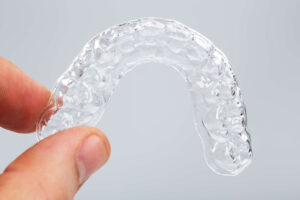There are several ways to straighten your teeth. Traditional braces come as the first option to improve your bite, smile, and overall appearance. There are very few people who are blessed with perfect teeth. But then there are people who have slightly crooked, suffer from an overbite, underbite, or gaps. If the problem is bigger, which causes a problem in eating, drinking, or opening your mouth properly, straightening your teeth is a great way. So, we will discuss Ceramic braces here.
Patients most often want a discreet orthodontic treatment which is discreet. Lingual braces and Invisalign are the options that are very popular among patients for the same reason. But there are certain differences between both the treatment options and both have their limitations and advantages.
What Are Lingual Braces?
Unlike traditional braces, they are fixed on the underside of teeth. They are fixed with brackets and wires. They are not visible on the outside unless you open your mouth very wide. They are not ideal for every tooth problem. Your Orthodontist will understand your problem and declare if you are a good candidate for Lingual braces or not.
What is Invisalign?
Invisalign braces are clear plastic aligners that are molded as per your teeth and gradually push them into the right position. As they are invisible, you can wear them and get on with your life normally. Invisalign is used to treat only mild or moderately misaligned teeth. If the problem is severe, there are other orthodontic treatments that you must look for.
Which Is Better- Lingual Braces Vs. Invisalign?
To give a verdict, you must know the advantages and disadvantages of both the treatment options and then decide.
Lingual Braces
Both the advantages and disadvantages of the lingual braces are described below-
Advantages
- Permanence
They are fixed, so you don’t need to remember to wear them. All you have to do is clean them properly, follow all the instructions, and visit your doctor regularly.
- Invisibility
Patients find it embarrassing to wear braces even when there is no problem in getting a treatment to set things right. Mostly young patients who go to school or college don’t want their classmates to make fun of their braces. They prefer invisibility and lingual braces ensure that.
- Control
As a patient, you can do nothing once the braces are fixed, giving more control to the dentist to guide your teeth.
- Effectiveness
Lingual braces are no different than traditional braces, apart from the fact that these are fixed inside. As a result, they are as effective as traditional braces.
Disadvantages
- Oral Hygiene
It is difficult to brush and floss around teeth as you cannot see these braces properly. Plus, you need to avoid different types of foods as they may get stuck inside the brackets and wires.
- Irritation
Whenever there is a foreign thing in your mouth, the tongue pokes it unconsciously. With lingual braces fixed inside the teeth, tongue irritation is common.
- Speech Changes
They are not common, but some patients may face speech changes with lingual braces.
- Cost
They are more costly than traditional braces and Invisalign.
- Availability
Every orthodontist clinic does not offer lingual braces. So, if you shift to a place where you can’t find any dentist who offers them, it can be problematic.
- Comfortable
Many people found them not as comfortable as traditional braces and Invisalign.
Invisalign
Here are the advantages and disadvantages of Invisalign braces.
Advantages
- Invisibility
They cover the row of teeth. They are made of plastic, so they fit in easily and don’t even hint that you are wearing aligners.
- Removability
That’s an advantage as well as a disadvantage of the aligners. Talking about the advantages, you can eat, drink, brush, and floss without any problem.
- Effectiveness
As your participation is most required, the effectiveness depends on following the rules and wearing them at least 22 hours a day. The more strictly you follow this, the sooner you will get your teeth fixed.
- Speed Of Treatment
There is no difference in the speed of treatment as both braces and aligners take the same time, depending upon your problem.
Disadvantages
- Cost
They cost as much as traditional braces, but the risk of ineffective treatment is higher with Invisalign.
- Responsibility
It is your responsibility to wear them for the most amount of time. If you don’t, your treatment plan messes up. Your dentist has almost no control over your treatment.
- Adjustability
It may take some time to adjust to these aligners. You may find it hard to move your tongue and lips in certain ways.
Conclusion
It is important to be well informed to make the best decision. When it comes to your mouth and smile, you want to be more than 100% sure. Now, you have everything listed about lingual braces and Invisalign. When you visit your dentist and learn your situation, you can better discuss your options and choose the best for you.
SOURCES:
- Wiechmann, D. (1999). “Lingual orthodontics (part 1): laboratory procedure”.
https://link.springer.com/content/pdf/10.1007/BF01301249.pdf - Gilbert, A. (2008). “Lingual orthodontics: The truly invisible orthodontics”.
https://www.ajodo.org/article/S0889-5406(08)00643-4/abstract - Muir, J. C. (1991). “Lingual orthodontic appliances: invisible braces”.
https://europepmc.org/article/med/1896144 - Wong, B. H. (2002). “Invisalign a to z”.
https://www.sciencedirect.com/science/article/pii/S0889540602539561 - Phan, X., & Ling, P. H. (2007). “Clinical limitations of Invisalign”.
http://www.cda-adc.ca/jcda/vol-73/issue-3/263.pdf



